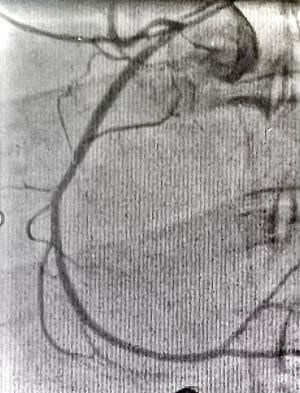Password Reset
Forgot your password? Enter the email address you used to create your account to initiate a password reset.
Forgot your password? Enter the email address you used to create your account to initiate a password reset.
2 Minutes
For more than four decades, coronary angioplasty and stenting has been utilized to treat narrowed coronary arteries. Since its inception in the 1970s, the procedure has greatly advanced and is widely available to patients suffering from various cardiovascular conditions.
Traditionally, the femoral artery has been a common access site for the procedure. Yet the femoral approach isn’t always the most beneficial – in certain cases, it may be difficult to visualize the coronary lesion depending on its origin from the aorta.

The above image shows the patient has anomalous origin of the right coronary artery which could not be visualized via femoral artery. Whenever the femoral approach is incomplete or unsuccessful, the radial approach is a critical alternative. In addition, radial arterial approach has been shown to reduce vascular complications compared to femoral arterial approach in a variety of clinical conditions.
One such case involves a 55-year-old Caucasian male who initially presented to a local hospital emergency department with shortness of breath and chest pain for two days.
The patient had a history of:
He received a long stent to treat two lesions in the LAD at a local hospital, but the right coronary artery (RCA) could not be visualized despite two catheterizations via the femoral approach. After arriving at UPMC in cardiogenic shock, intubated state, the RCA was visualized and stented via radial approach using the 6 Fr left coronary AMPLATZ-1 guide by Krishna Tummalapalli, MD.
After being clinically stabilized and after the cardiogenic shock resolved, the patient was discharged to a cardiac rehab facility on appropriate medical therapy. This case demonstrates the importance of the radial approach to coronary angioplasty. In addition to being a beneficial alternative when the femoral approach is unsuccessful, studies suggest that radial approach may be associated with less complications for patients as well, including reduction in bleeding and even mortality.